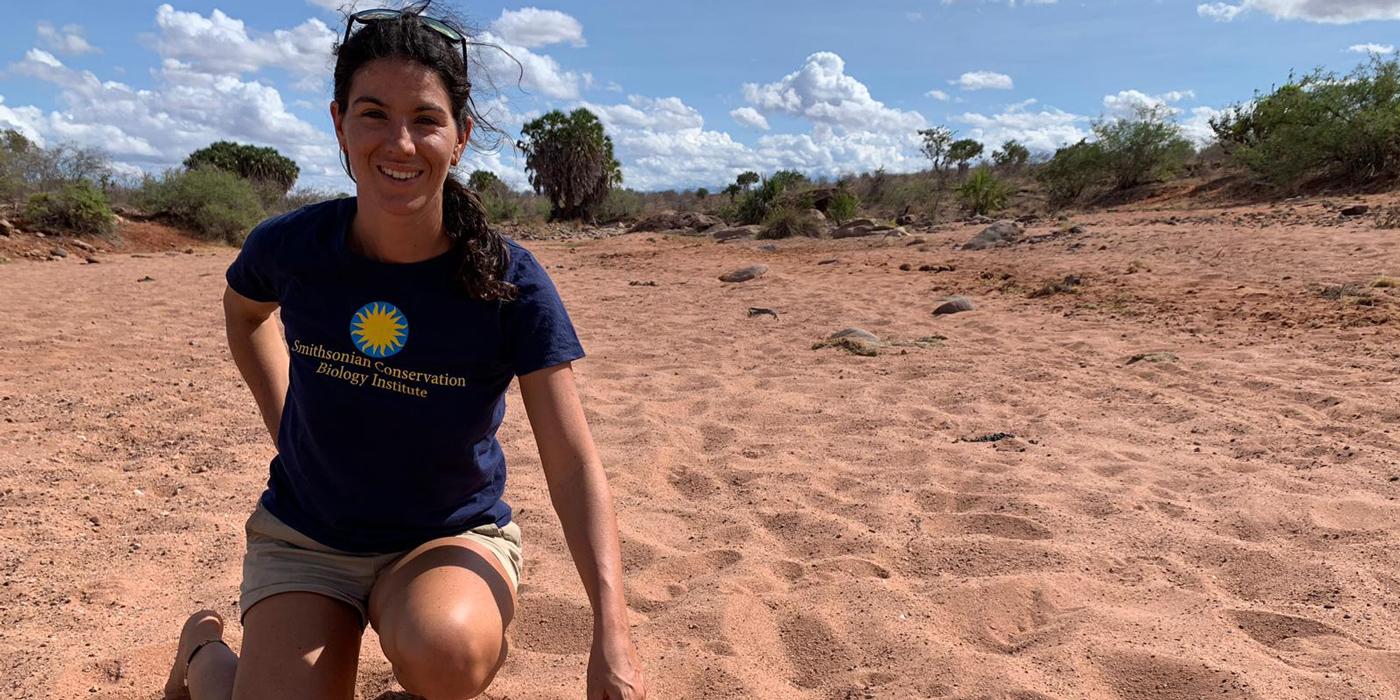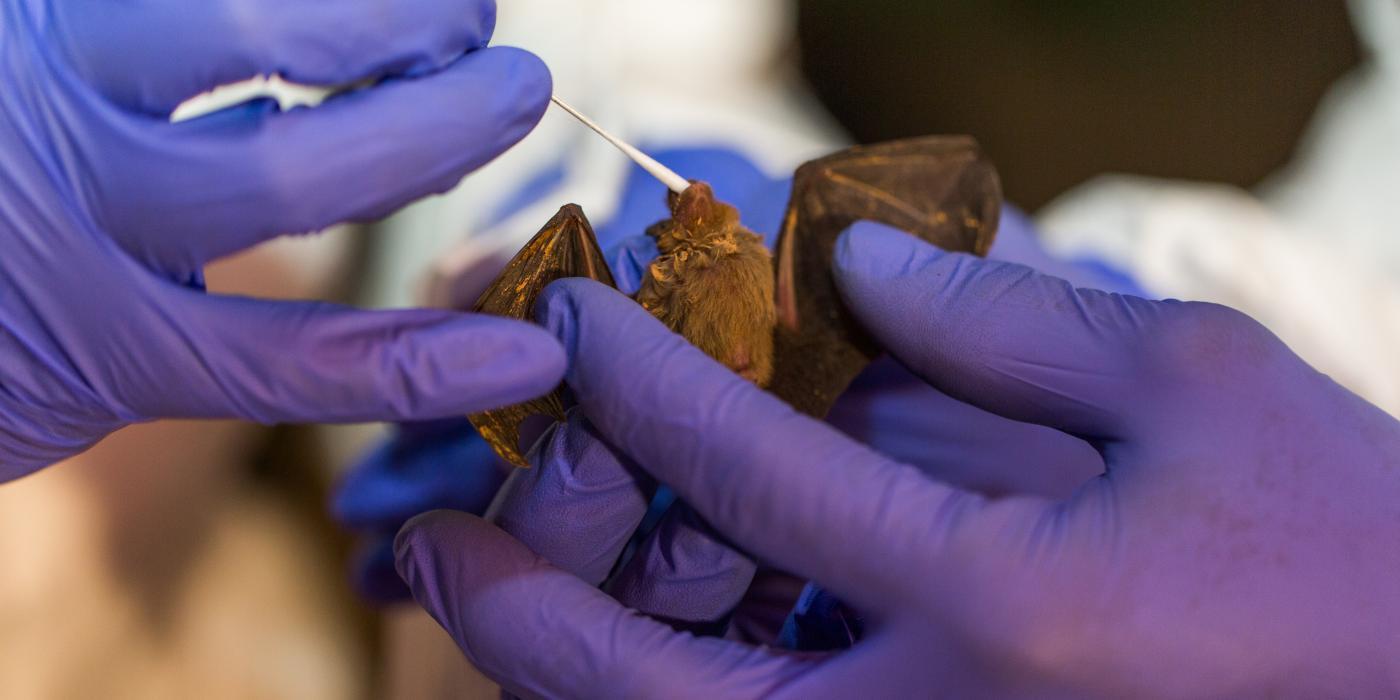Science Snapshot: Studying Baboons in Ethiopia
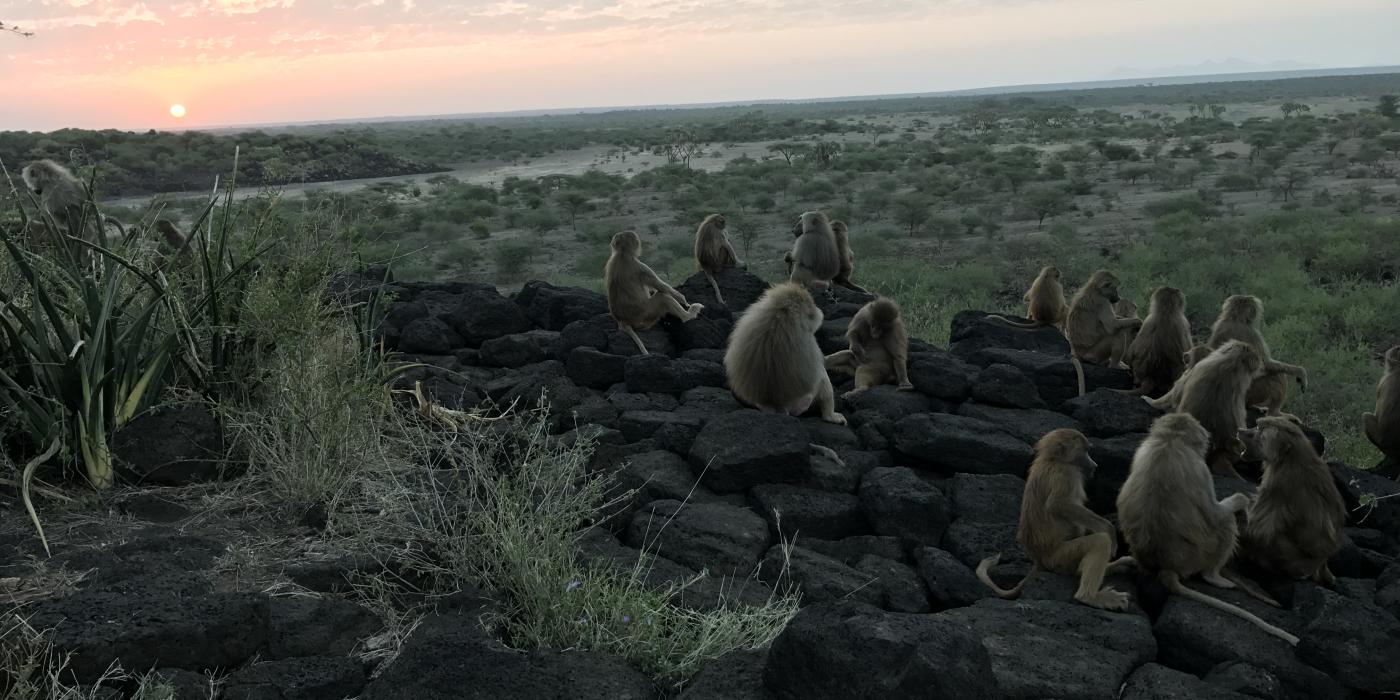
For the past two years, Global Health Program veterinarian Dawn Zimmerman traveled to Awash National Park in Ethiopia to collar hamadryas baboons, helping researchers track the primates and study their biology, reproduction and social nature. The following travel log was written by Filoha Hamadryas Project intern Martha Bierut and Zimmerman.
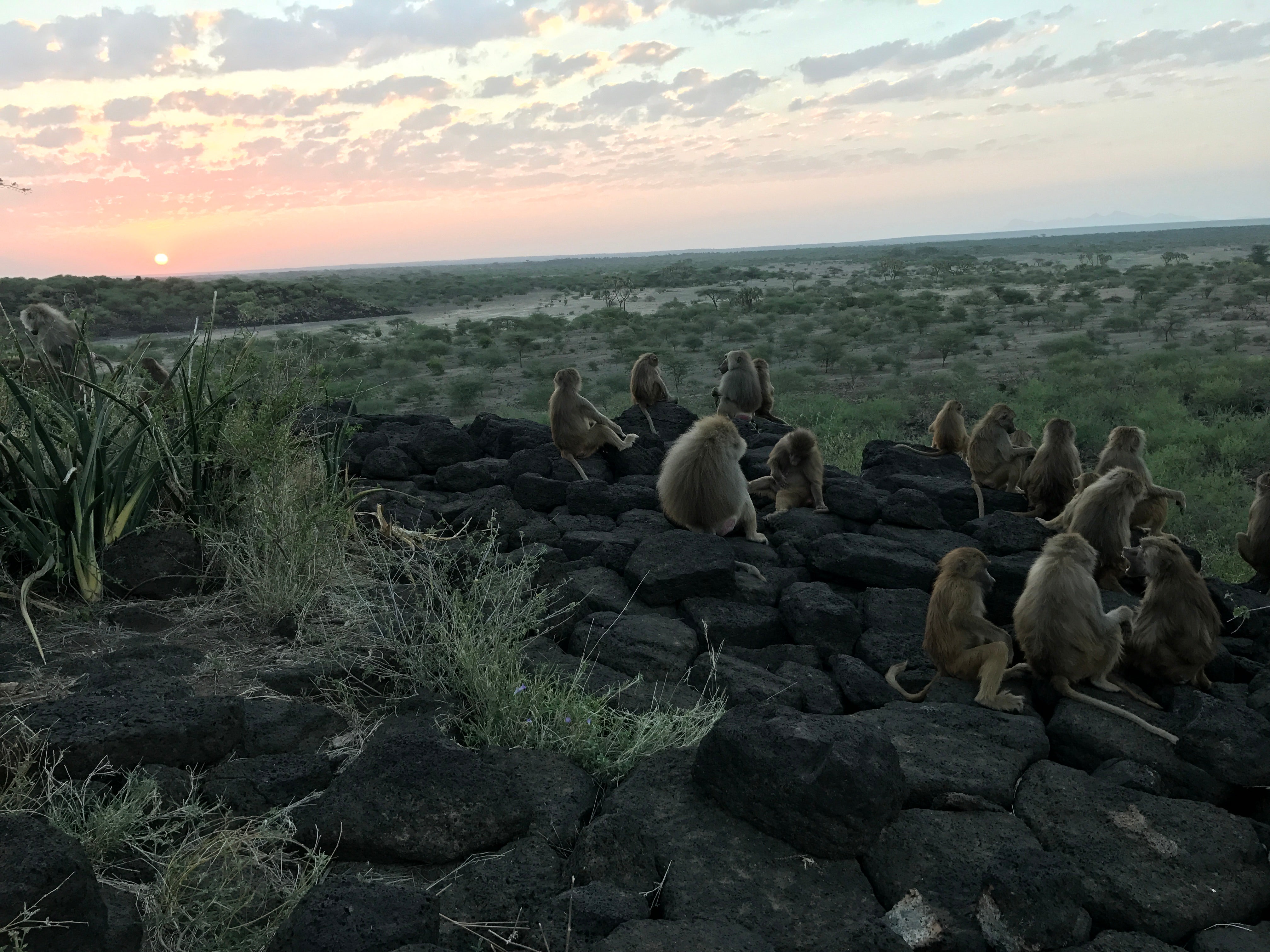
It is dawn at Filoha cliff in Awash National Park, a government-established protected area in central lowland Ethiopia. The early morning sun peeks over the horizon, warming the black volcanic rocks of the cliff and causing the bubbling hot springs to shimmer.
Among the rocks and atop the precipice, furry figures begin to stir. It is time for this band of hamadryas baboons to wake up after surviving another night in the semi-desert, where lions, hyenas and humans are a constant threat.
Infants and juveniles emerge from their mother’s warm embrace to play, fight and socialize, chirping and squealing as they show off their strength and climb through the acacia thornscrub. Sub-adults and adults begin to groom each other, strengthening social bonds.
A teenaged male shakes the branches of an acacia tree with great force before sauntering close to a leader male and his unit of females. The females huddle close to their leader as he yawns, showing his formidable canines in a clear threat, indicating his willingness to ferociously defend his tenure as a leader.
Out of the serene morning glow, violence erupts, the leader male bounding after his young adversary with great speed as clouds of dust engulf the band. Females and their young scatter to escape the skirmish. It is an innocuous bout. The young male is briefly thrown onto his back in submission, and the leader male eases off and returns to his females.
This battle is another failed takeover attempt by this young male. He has much more growth and learning to do before he can be a true contender to become a leader male. This incident is one of many that occurs throughout the day within this band of hamadryas baboons, as they constantly grapple for control of breeding females.
Baboons are widespread across Africa and can thrive in many different climates and environments. Some within the scientific community believe that all baboons should be categorized as subspecies of the same species, while others recognize six species based on morphological, behavioral, developmental and genetic differences.
Forest baboons, such as the Guinea baboons of West Africa and the olive baboons of central Africa, live in tropical rainforest environments and spend much of their time in trees.
Savannah baboons, including the olive baboons of East Africa and the chacma baboons of South Africa, thrive in open environments and travel long distances for food during the dry season.
Desert baboons, such as the chacma baboons of Namibia and the hamadryas baboons of the Horn of Africa and the Arabian Peninsula, reside in arid semi-desert ecosystems in which food availability is highly influenced by seasonality.
There is overlap between the distributions of the olive baboons of Kenya and the hamadryas baboons of Ethiopia. As a result, there are groups that have bred between these two subspecies. Interestingly, their hybrid offspring exhibit a spectrum of behaviors found in both hamadryas baboons and olive baboons.
While all baboon species live in groups, hamadryas baboons have a uniquely complex multi-tiered social structure. The largest grouping is the troop—all of the baboons that share a sleeping site — which can easily exceed hundreds of individuals. Hamadryas baboons sleep in large groups on cliff faces to lessen the chances of predation—large groups increase vigilance to lurking predators.
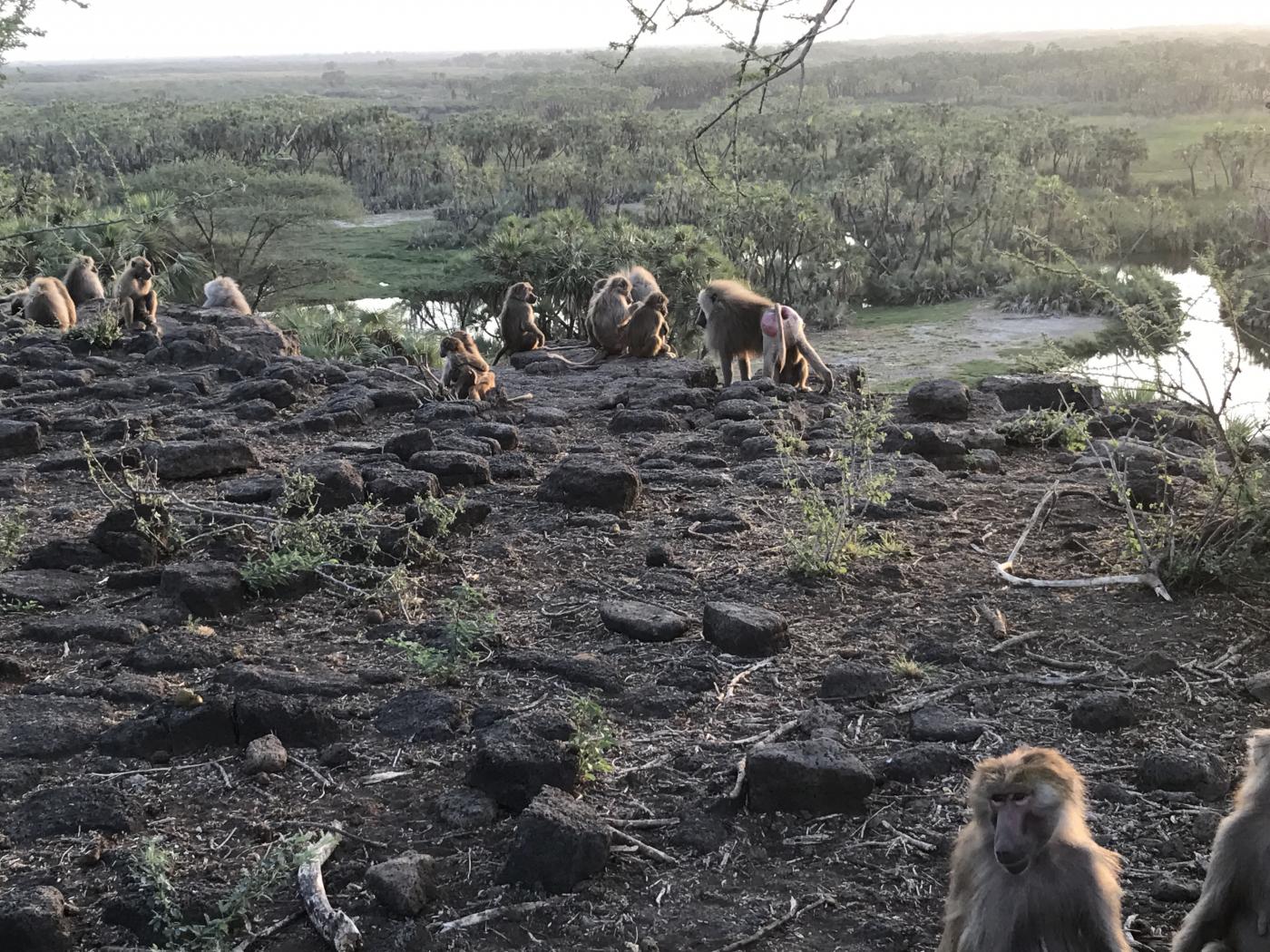
While troops are only temporary groupings at sleeping cliffs, bands are visibly distinct. Bands are the groups of hamadryas baboons that travel together throughout the day, foraging, socializing and fighting together.
Bands can also be comprised of well over a hundred individuals. Within bands are less obvious social units called clans, which are comprised of related males and their females and young. The smallest group in hamadryas society is the one-male unit, which includes a leader male, perhaps a follower male or two and his unit of females. The leader male has sole mating rights to his females, and he protects his females and their progeny.
Female promiscuity, used as a tactic by most baboon species, increases the possibility that each of several males might have sired their young. Because of paternity confusion, females reduce the chance that males will behave aggressively towards their young. However, it is possible that males might also not be as protective of the young within a group.
Hamadryas baboons, however, practice the extreme opposite strategy. For the most part, hamadryas females mate exclusively with the leader male. Leader males use feats of strength and violence to obtain single mating rights to females. Females very rarely mate with other males, allowing leader males to have high paternity certainty, leading them to be very protective of their females and dependent offspring in the interest of carrying on their genes.
Hamadryas baboons are socially complex and behaviorally unique from other baboon species. In conjunction with Ethiopian Wildlife Conservation Authority, the Filoha Hamadryas Project is continuing to answer questions about the behavioral biology and socioecology of these fascinating animals.
Here, the team of researchers have set up camp.
This is a longstanding research project on the hamadryas baboons of Awash National Park, Ethiopia, led by Dr. Larissa Swedell of Queens College of the City University of New York and the New York Consortium of Evolutionary Primatology.
As a research assistant for the project, Martha Beirut gathered focal behavioral data and collected fecal samples for DNA and hormone analyses. With these data, researchers will better understand the behavior of hamadryas baboons through a genetic and endocrine lens.
Understanding relatedness between individuals as well as changes in the hormones of the baboons will better inform researchers about their behaviors and the ways that they interact with each other. These insights can further the scientific community’s understanding of primate and human evolution.
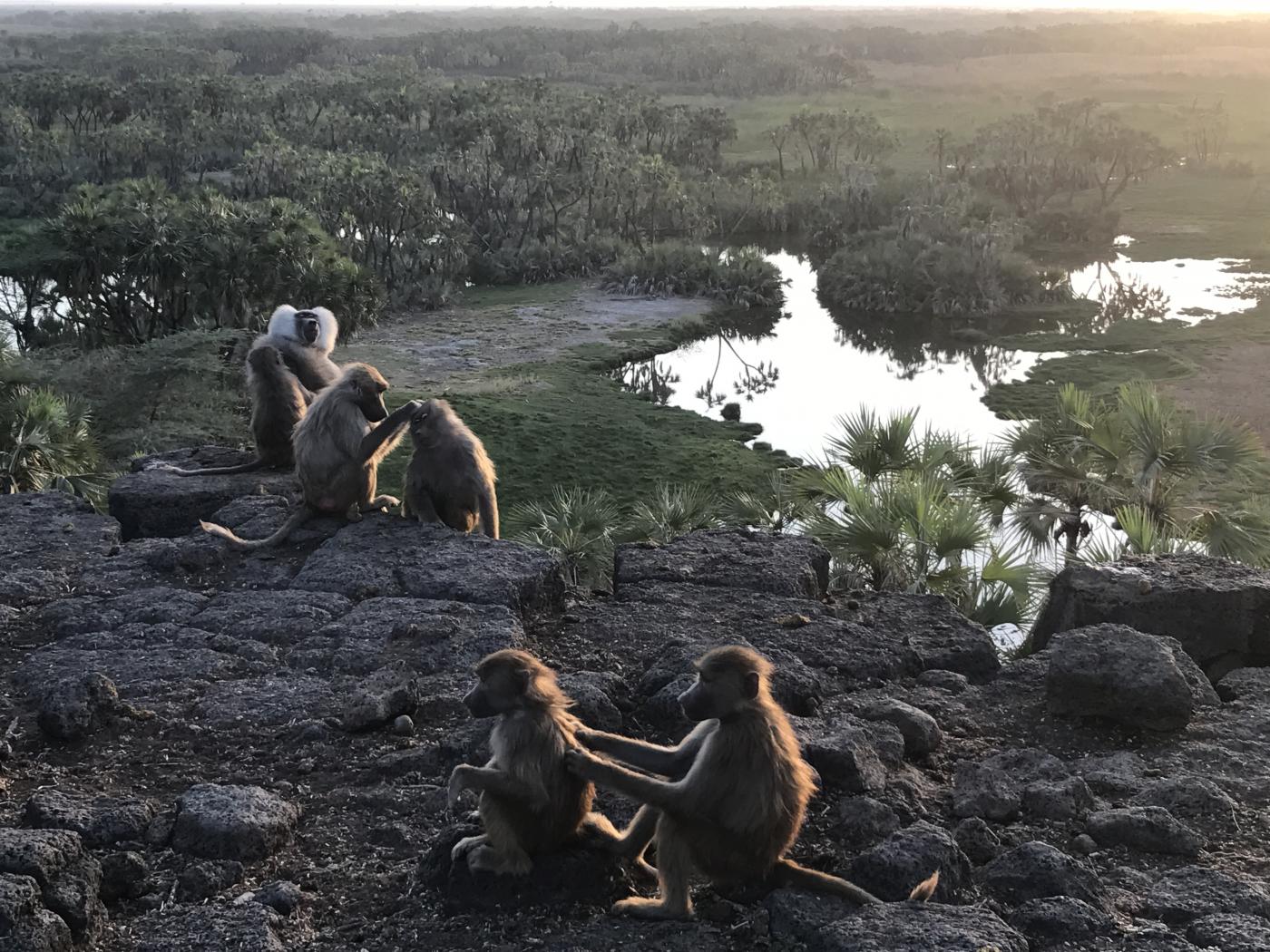
For the past two years, Global Health Program veterinarian Dawn Zimmerman has assisted the Filoha Hamadryas Project by anesthetizing adult male baboons and fitting them with GPS collars. The collars allow researchers to locate a baboon troop each night and morning, and then track the animals’ movements. Researchers conduct visual assessments of the primates, focusing on their behavior, nutritional preferences and social interactions.
“While hamadryas baboons are not endangered, they exhibit unique characteristics that can lend insight to the survival of a species. Studies such as Swedell’s project significantly contribute to the preservation of biodiverse regions, including Awash National Park,” Zimmerman says. “Baboons can also act as disease sentinels for similar endangered species, as well as for local human populations (notably, the Afar tribe). As the risk of disease transmission is higher when humans, wildlife and livestock overlap (a key characteristic at Filoha), the Global Health Program is interested in establishing disease surveillance efforts at this site — representative of a One Health study to help ensure the survival of all species.”
This story appears in the October 2018 issue of Smithsonian Conservation Biology Institute News. Martha Bierut is an organismal biologist who has spent time working in field research and conservation in Kenya, Tanzania, Uganda and Ethiopia. The Filoha Hamadryas Project is made possible by support from the Leakey Foundation, the National Geographic Society, the Wenner-Gren Foundation and the National Science Foundation.
